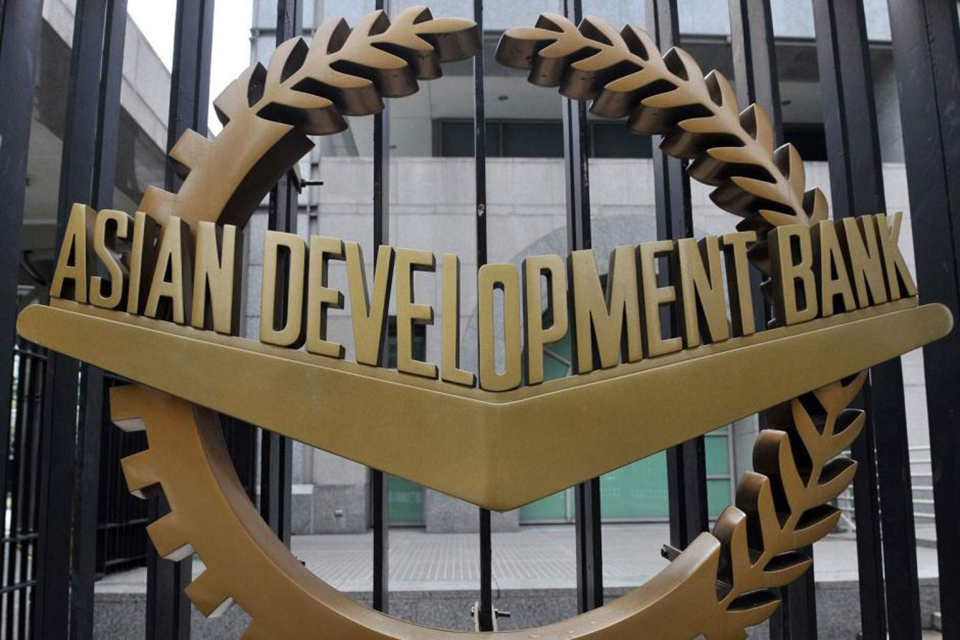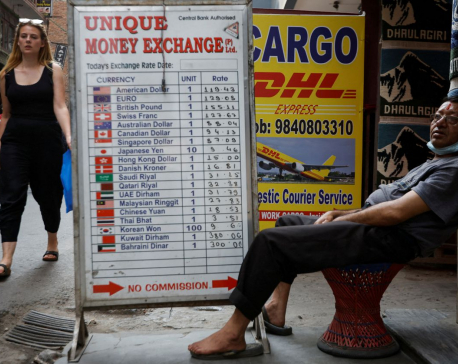
OR
Nepal’s economy to grow at a healthy, but slower rate in FY2019: ADB
Published On: September 26, 2018 05:51 PM NPT By: Republica | @RepublicaNepal

KATHMANDU, Sept 26: Nepal’s economy is anticipated to grow by 5.5% (at basic prices) in fiscal year (FY) 2019, down from 5.9% a year earlier says the latest Asian Development Bank (ADB) Nepal Macroeconomic Update.
“The growth forecast represents a continued trend reversal but is substantially higher than the average rate of 4.3% in the last 10years (FY2009-FY2018),” the statement reads quoting ADB’s Principal Economist for Nepal. “Growth will be supported by expectations of greater political stability following the 2017 elections, normal monsoon, and efforts to accelerate implementation of mega infrastructure projects”, the statement added.
The limited capacity at sub-national levels and challenges to smooth implementation of federalism may pose risks to growth. According to the update, some of the major issues affecting the smooth implementation of fiscal federalism are slow to progress in requisite legislation and deployment of staff, the need for further clarification of mandates and responsibilities of the three tiers of government, and inconsistencies in revenue mobilization regarding fees and taxes at local levels.
The agriculture sector will likely grow from 2.8% in FY2018 to 3.5% in FY2019, on the back of an anticipated bumper harvest supported by a good monsoon. Industry sector is expected to expand by 7.2% in FY2019 buoyed by improved electricity supply. And the services sector will likely grow by 6.1% in FY2019 with the expansion of wholesale and retail trade, financial intermediation and travel and tourism subsectors.
The update says inflation is projected to rise to 6.0% in FY2019 from 4.2% in FY2018, partly reflecting higher inflation expected in India, a modest rise in oil prices and higher government expenditures under the new federal structure.
Though revenue collection of Nepalese Rupees731.4 billion (24.3% of GDP) slightly exceeded the budget target in FY2018, the fiscal deficit widened to 6.7% of GDP with the rise in government expenditures compared to the previous year. While capital expenditures increased by 28.0% in FY2018 with the execution rate at 79.7%, the hasty nature of spending has continued undermining the quality of capital projects, says the update.
Nepal increasingly faces the risk of external sector instability due to a rising trade and current account deficit. The current account deficit of $2.4 billion (8.2% of GDP) in FY2018 is significantly higher than the deficit of $95.7 million, or 0.4% of GDP, a year earlier. The merchandise trade deficit increased on the higher import of construction materials and capital goods in FY2018. While remittance has shown a healthy growth, a substantial rise in the near future is unlikely to offset the rise in the trade deficit, leading to further widening of the current account gap.
ADB is committed to achieving a prosperous, inclusive, resilient, and sustainable Asia and the Pacific while sustaining its efforts to eradicate extreme poverty. Established in 1966, it is owned by 67 members—48 from the region. In 2017, ADB operations totaled $32.2 billion, including $11.9 billion in co-financing.
You May Like This

ADB's forecast of 5.5 percent growth lower than that of govt
KATHMANDU, Sept 27: Asian Development Bank (ADB) has forecast Nepal's economy to grow by 5.5 percent in Fiscal Year 2018/19. ... Read More...

Nepal seeks overseas nationals' help to build up forex reserves amid economic woes
KATHMANDU, April 17: Nepal is asking citizens living abroad to deposit funds in domestic banks as part of efforts to... Read More...

Arnaud Cauchois appointed ADB’s new country director for Nepal
KATHMANDU, July 6: The Asian Development Bank (ADB) has appointed Arnaud Cauchois as new Country Director for Nepal. ... Read More...





Just In
- Nepalgunj ICP handed over to Nepal, to come into operation from May 8
- Nepal to gift two elephants to Qatar during Emir's state visit
- NUP Chair Shrestha: Resham Chaudhary, convicted in Tikapur murder case, ineligible for party membership
- Dr Ram Kantha Makaju Shrestha: A visionary leader transforming healthcare in Nepal
- Let us present practical projects, not 'wish list': PM Dahal
- President Paudel requests Emir of Qatar to initiate release of Bipin Joshi
- Emir of Qatar and President Paudel hold discussions at Sheetal Niwas
- Devi Khadka: The champion of sexual violence victims



_20240423174443.jpg)










Leave A Comment